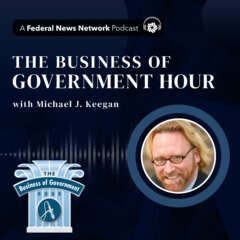
Weekly Roundup July 11-15, 2022

Preparing governments for future shocks. IBM, working through the IBM Center for The Business of Government and the IBM Institute for Business Value, and in partnership with the National Academy of Public Administration (NAPA) plan to convene a series of roundtable discussions with global experts from across the public and private sectors to curate and share lessons learned in each of these domains and to identify strategies and solutions for governments to address the challenges that lie ahead.
A Risk-Based Approach to AI Procurement. Adopting a risk-based approach to procurement and clearly communicating it to vendors can help address such issues by giving the procuring organization advance notice of the specific oversight capabilities it will need in future stages of the system lifecycle, preventing vendors from presenting intellectual property arguments against required testing, monitoring and auditing of their AI systems going forward and rewarding vendors—of all sizes—that are more advanced and responsive in their responsible AI efforts.
Feds Aiming to Standardize Modern DevSecOps Practices. DevSecOps – which requires collaboration and integration of development, operations, and security teams in software development – is far from a new concept in the Federal agency arena, but at the same time the practice has not been adopted in the form of a government-wide directive. The administration’s May 2021 cybersecurity executive order that directs the Federal government as a whole to adopt secure software development practices is changing that adoption landscape. The Cybersecurity and Infrastructure Security Agency (CISA) is now working with the Office of Management and Budget (OMB) and the National Institute of Standards and Technology (NIST) to develop a “whole-of-government” way to measure secure software development.
Joined-up government: what works and when. The question of how public sector agencies can best work together is central to tackling the most complex public policy challenges. Using a range of Aotearoa New Zealand case studies, a new e-book identifies 18 model forms for joined-up government. The book rejects the idea that collaboration can be reduced to a universal best practice and instead answers the question: when should you use which model? Rodney Scott and R.K. Merton provides key insight into this question with their recent book: Contingent collaboration: When to use which models for joined-up government. Rodney is co-author of the IBM Center report: Interagency Performance Targets: A Case Study of New Zealand’s Results Programme.
Customer service at the National Security Agency. The Lectern: Steve Kelman finds a helping hand in the highly secretive spy shop. I am amazed and impressed by NSA's behavior here. This is perhaps the most-secretive agency in government; sometimes its initials have been said to stand for "no such agency." Yet here they are not only getting back to me with super-speed but also without raising issues agreeing to my request to talk. This was world-class customer service.
NEW GAO Report: Federal Spending Transparency: OIGs Identified a Variety of Issues with the Quality of Agencies' Data Submissions; GAO-22-105427. OIGs reported that the overall quality levels of data agencies submitted were “excellent” or “higher” based on a combination of scores from statistical and non-statistical test results. Some OIGs reported that their agencies' overall data quality levels were “moderate” or “lower.” Many (31 of 57) OIGs reported that their agencies had COVID-19 outlays, and 23 of these reported that their agencies' overall data quality levels were excellent or higher quality.
Performance Measurements Can Help Programs. It Can Also Hurt Them. In the decades that we’ve researched state and local government management, we’ve often written about the critical ways in which performance measurement can improve the delivery of services and the accomplishment of program goals.
Profiles in Improvement. 2021 was a difficult year for federal employees, who navigated a change in administration and transitioned back to the office. But agencies worked hard to improve in all categories of employee engagement and satisfaction.
A strong narrative makes communications more compelling. Like a good book or TV show, your communications with top executives need a cohesive story and milestones to mark progress, and you need to explain how the project helps the company in the long run, writes Scott Eblin. Milestones are necessary "to create a compelling narrative that keeps senior executives feeling confident about your work, focused on your outcomes and engaged in how they can help and support," Eblin writes. Eblin Group
6 ways to enhance your listening skills. Improve listening skills by eliminating distractions, asking open-ended questions with the goal of understanding the other person and acknowledging their emotions, writes Ken Blanchard. "Resist the temptation to jump in during silent moments -- especially if you are an extrovert," Blanchard adds. How We Lead blog
 Next Week on The Business of Government Hour: Proactively Shape the Future: A Conversation with Kara Cunzeman, Lead for Strategic Foresight, at The Aerospace Corporation’s Center for Space Policy and Strategy. What is the mission of the Center for Space Policy and Strategy at the Aerospace Corporation? How does it use innovative approaches such as strategic foresight and futures thinking to meet its mission? Join host Michael Keegan as he explores these questions and more with Kara Cunzeman, Lead for Strategic Foresight, at The Aerospace Corporation’s Center for Space Policy and Strategy.
Next Week on The Business of Government Hour: Proactively Shape the Future: A Conversation with Kara Cunzeman, Lead for Strategic Foresight, at The Aerospace Corporation’s Center for Space Policy and Strategy. What is the mission of the Center for Space Policy and Strategy at the Aerospace Corporation? How does it use innovative approaches such as strategic foresight and futures thinking to meet its mission? Join host Michael Keegan as he explores these questions and more with Kara Cunzeman, Lead for Strategic Foresight, at The Aerospace Corporation’s Center for Space Policy and Strategy.
Broadcast Schedule: The show airs Monday at 11 a.m., and Friday at 1 p.m. on Federal News Network 1500AM WFED
Anytime, Anywhere on...
https://www.podcastone.com/the-business-of-government-hour
https://itunes.apple.com/us/podcast/the-business-of-government-radio-



